Glass Test Tube with Cork Cap
 A test tube, also known as a culture tube or sample tube, is a common piece of laboratory glassware consisting of a finger-like length of glass or clear plastic tubing, open at the top, usually with a rounded U-shaped bottom.
A large test tube specifically for boiling liquids is called a boiling tube.
Test tubes are available in a multitude of lengths and widths, typically from 10 to 20 mm wide and 50 to 200 mm long.[1] The top often features a flared lip to aid pouring out the contents; some sources consider that the presence of a lip is what distinguishes a test tube from a culture tube.[2] A test tube has either a flat bottom, a round bottom, or a conical bottom. Some test tubes are made to accept a ground glass stopper or a screw cap. They are often provided with a small ground glass or white glaze area near the top for labelling with a pencil.
Application:
Test tubes are widely used by chemists to hold, mix, or heat small quantities of solid or liquid chemicals, especially for qualitative experiments and assays. Their round bottom and straight sides minimize mass loss when pouring, make them easier to clean, and allow convenient monitoring of the contents. The long, narrow neck slows down the spreading of vapours and gases to the environment.
A test tube filled with water and upturned into a water-filled beaker is often used to capture gases, e.g. in electrolysis demonstrations.
Culture tubes are often used in biology for handling and culturing all kinds of live organisms, such as molds, bacteria, seedlings, plant cuttings, etc.; and in medicine and forensics to store samples of blood or other fluids.
A test tube with a stopper is often used for temporary storage of chemical or biological samples.
Test tubes are usually held in special-purpose racks, clamps, or tongs. Some racks for culture tubes are designed to hold the tubes in a nearly horizontal position, so as to maximize the surface of the culture medium inside.
Test tubes are sometimes put to casual uses outside of lab environments, e.g. as flower vases, glassware for certain weak shots, or containers for spices.
Where large numbers of tests are run or only small amounts are available for testing, or both, microtiter plates are often used as small test tubes.
Â
Manufacture:
Test tubes for physics and chemistry are usually made of glass for better resistance to heat and corrosive chemicals and longer life. Tubes made from expansion-resistant glasses, such as borosilicate glass, can be placed directly over a Bunsen burner flame.
Culture tubes for biology are usually made of clear plastic (such as polystyrene or polypropylene) by injection molding [3] and are often discarded after use.
Test tubes may come with prepared contents. For example, a blue top tube is a test tube of 5 ml containing sodium citrate as an anticoagulant, used to collect specimens for coagulation screens and testing for glucose-6-phosphate dehydrogenase.[4] A test tube is very resistant and can usually withstand temperatures over 300 degrees C.
(From Wiki pedia: http://en.wikipedia.org/wiki/Test_tube)
Â
Test tube:
Product description:
We can produce any sizes according to request.
Material: Neutral glass tube or borosilicate 3.3 glass tube.
We can print logo and text on all type of test tube.
Standard: ISO and YBB.
Yearly output: 200 million.
Normal sizes: (Outside Diameter*Length)
6*50mm
8*50mm
10*75mm
12*75mm
13*100mm
15*100mm
15*125mm
15*150mm
16*100mm
16*125mm
16*150mm
18*150mm
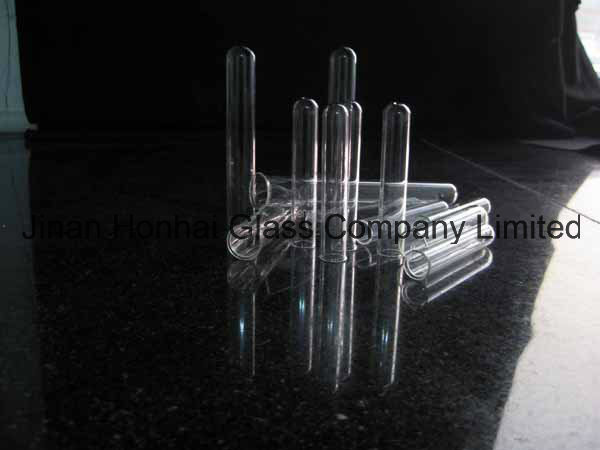
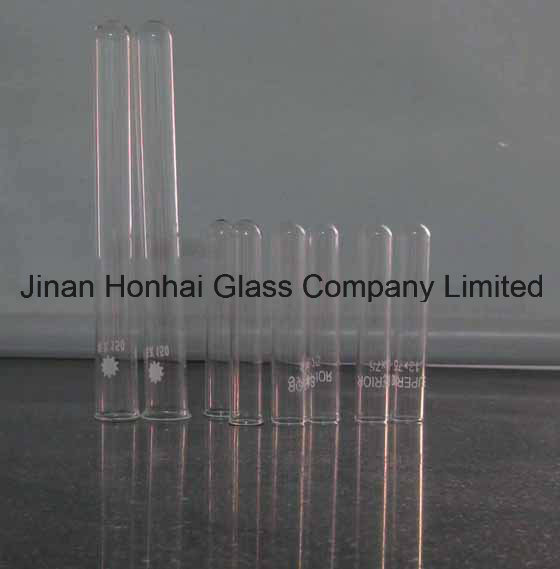
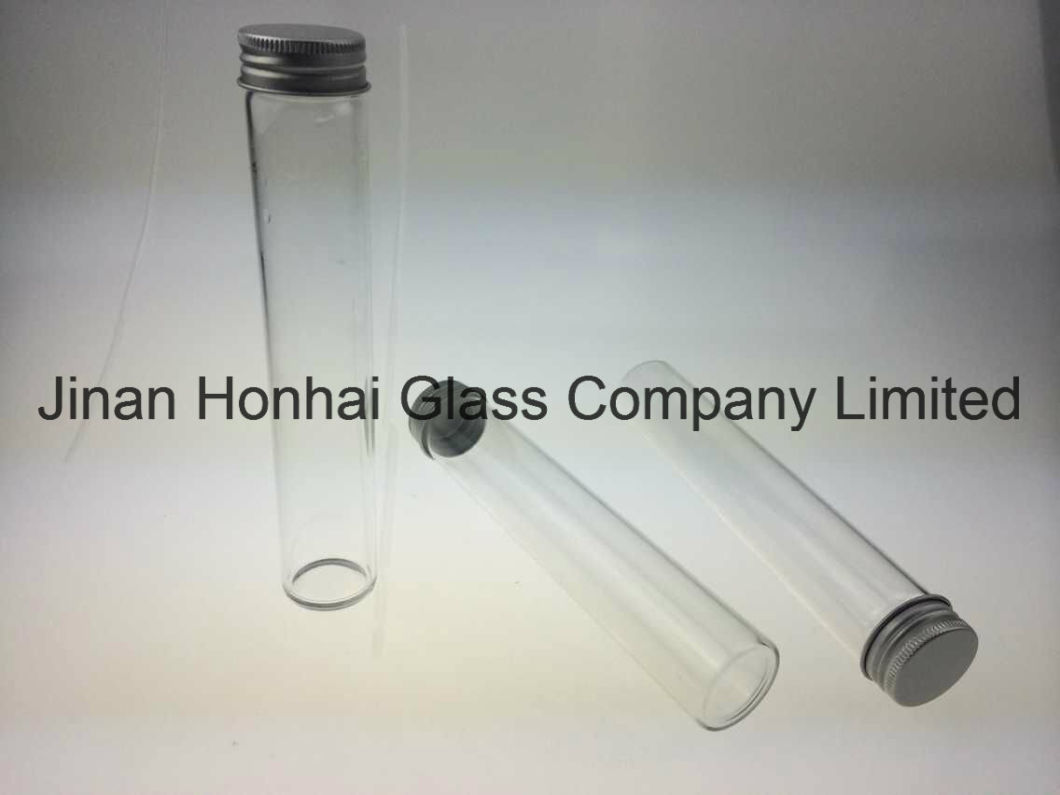
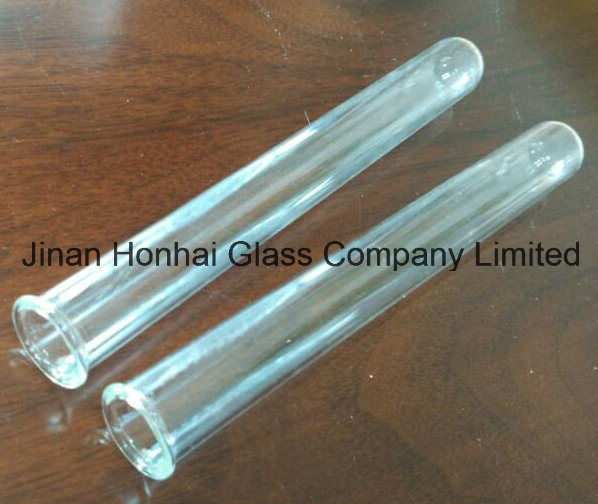
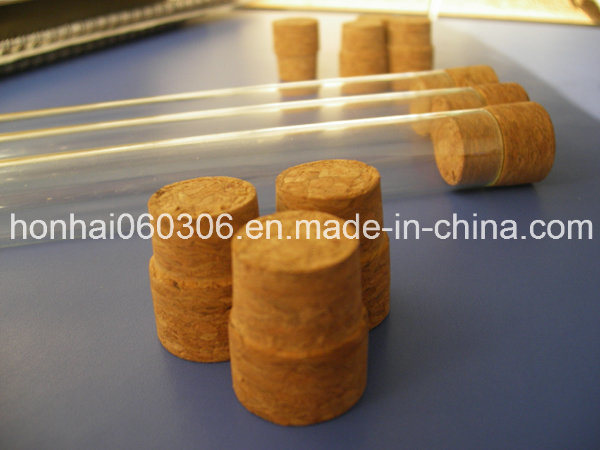
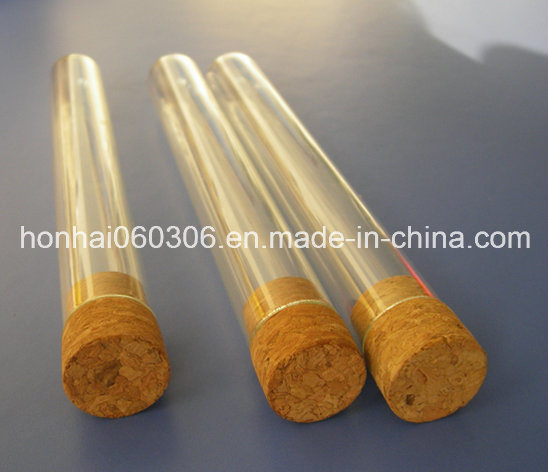 2015 hotsale glass test tube with cork
2015 hotsale glass test tube with cork A test tube, also known as a culture tube or sample tube, is a common piece of laboratory glassware consisting of a finger-like length of glass or clear plastic tubing, open at the top, usually with a rounded U-shaped bottom.
A large test tube specifically for boiling liquids is called a boiling tube.
Test tubes are available in a multitude of lengths and widths, typically from 10 to 20 mm wide and 50 to 200 mm long.[1] The top often features a flared lip to aid pouring out the contents; some sources consider that the presence of a lip is what distinguishes a test tube from a culture tube.[2] A test tube has either a flat bottom, a round bottom, or a conical bottom. Some test tubes are made to accept a ground glass stopper or a screw cap. They are often provided with a small ground glass or white glaze area near the top for labelling with a pencil.
Application:
Test tubes are widely used by chemists to hold, mix, or heat small quantities of solid or liquid chemicals, especially for qualitative experiments and assays. Their round bottom and straight sides minimize mass loss when pouring, make them easier to clean, and allow convenient monitoring of the contents. The long, narrow neck slows down the spreading of vapours and gases to the environment.
A test tube filled with water and upturned into a water-filled beaker is often used to capture gases, e.g. in electrolysis demonstrations.
Culture tubes are often used in biology for handling and culturing all kinds of live organisms, such as molds, bacteria, seedlings, plant cuttings, etc.; and in medicine and forensics to store samples of blood or other fluids.
A test tube with a stopper is often used for temporary storage of chemical or biological samples.
Test tubes are usually held in special-purpose racks, clamps, or tongs. Some racks for culture tubes are designed to hold the tubes in a nearly horizontal position, so as to maximize the surface of the culture medium inside.
Test tubes are sometimes put to casual uses outside of lab environments, e.g. as flower vases, glassware for certain weak shots, or containers for spices.
Where large numbers of tests are run or only small amounts are available for testing, or both, microtiter plates are often used as small test tubes.
Â
Manufacture:
Test tubes for physics and chemistry are usually made of glass for better resistance to heat and corrosive chemicals and longer life. Tubes made from expansion-resistant glasses, such as borosilicate glass, can be placed directly over a Bunsen burner flame.
Culture tubes for biology are usually made of clear plastic (such as polystyrene or polypropylene) by injection molding [3] and are often discarded after use.
Test tubes may come with prepared contents. For example, a blue top tube is a test tube of 5 ml containing sodium citrate as an anticoagulant, used to collect specimens for coagulation screens and testing for glucose-6-phosphate dehydrogenase.[4] A test tube is very resistant and can usually withstand temperatures over 300 degrees C.
(From Wiki pedia: http://en.wikipedia.org/wiki/Test_tube)
Â
Test tube:
Product description:
We can produce any sizes according to request.
Material: Neutral glass tube or borosilicate 3.3 glass tube.
We can print logo and text on all type of test tube.
Standard: ISO and YBB.
Yearly output: 200 million.
Normal sizes: (Outside Diameter*Length)
6*50mm
8*50mm
10*75mm
12*75mm
13*100mm
15*100mm
15*125mm
15*150mm
16*100mm
16*125mm
16*150mm
18*150mm






A carbon steel plate has usually been considered as the steel that does not contain much alloy steel elements, also named as mild steel. Generally, elements are C, Mn, P, S, Si, besides these, there are no minimum limits for elements of Al, Cr, Ni, Mo, V, etc.
Carbon steel plates are available in different grades depending on the carbon content and strength.
As the content of Carbon increase, the steel plate hardness increases.
Low carbon steel plate: For carbon content 0.06% to 0.25%, also we call it mild steel plate.
Medium carbon steel plate: C content from 0.25% to 0.55%.
High carbon steel plate: 0.55% to 1.0%, also called hard steel plate.
Low carbon steel is the most common form, and it's very malleable and ductile. Medium carbon steel balances ductility as well as strength for excellent wear resistance. High carbon steel is exceptionally strong, while ultra-high carbon steel can be tempered to even greater hardness but no malleability.
As the percentage of carbon gets larger, steel can become harder and stronger through heat-treating. Carbon steel is usually heated to change the mechanical properties of steel, usually ductility, hardness, strength, and resistance of impact. Increasing the carbon content of carbon steel makes it harder and stronger, but reduces the steel`s ability to be welded, making it more brittle.
Carbon steel plate is most often used for structural purposes such as buildings, yet it has the flexibility to be worked into ornate designs. Low carbon steel sheet (wrought iron) is typically used for fences, chain links, gates, and railings. Structural steel (medium carbon steel) is used in cars, refrigerators, washing machines, buildings, and bridges. The steel sheets are normally made up of medium carbon steel.
Boiler Steel Plate, Carbon Steel Plate, Mild Steel Plate, Hot Rolled Steel Plate, Wear Resistant Plate
Shandong Guanzhou Iron and Steel Group Co., Ltd , https://www.cnshansteel.com